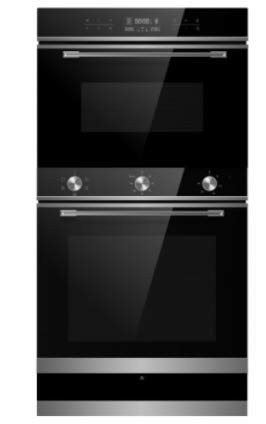Understanding Oven Hobs: The Heart of Culinary Crafting
In the world of contemporary cooking areas, the oven hob sticks out as a vital home appliance. Not just is it a central part for preparing a range of meals, however it also influences kitchen aesthetics, performance, and efficiency. This short article dives into the kinds of oven hobs, their features, advantages, and upkeep tips. Furthermore, it attends to some often asked questions to provide a detailed understanding of this necessary kitchen device.
Types of Oven Hobs
Oven hobs can be categorized into numerous types based on their energy source and style. Comprehending these variations can help consumers make informed choices when picking the ideal hob for their kitchen requires.
1. Gas Hobs
Gas hobs utilize natural gas or gas as fuel, providing accurate temperature level control and instant heat. They are favored by many chefs for their ability to offer visual feedback through flame.
Pros:
- Quick heat-up time.
- Accurate temperature level modifications.
- Suitable with all types of cookware.
Cons:
- Requires a continuous gas supply.
- Safety interest in open flames.
- Requires more maintenance.
2. Electric Hobs
Electric hobs are powered by electricity and function smooth glass or ceramic surface areas. They frequently are available in 2 types: coil and solid.
Pros:
- Sleek look.
- No open flames, decreasing security threats.
- Easy to clean.
Cons:
- Slower to warm up and cool off.
- May need specific cookware (induction).
- Some may have unequal heat distribution.
3. Induction Hobs
Induction hobs utilize electro-magnetic energy to straight heat up pots and pans. They only work with ferromagnetic cookware.
Pros:
- Very energy-efficient.
- Fast heating and cooling times.
- Safe, as the surface remains reasonably cool.
Cons:
- Limited to specific types of cookware.
- Higher preliminary cost.
- Can produce sound when in use.
4. Strong Plate Hobs
These electric hobs feature solid metal plates that warm up and keep heat for cooking.
Pros:
- Durable and trustworthy.
- Straightforward operation.
Cons:
- Takes time to warm up.
- Less effective than induction and gas designs.
| Hob Type | Heat Source | Visual appeals | Upkeep |
|---|---|---|---|
| Gas Hobs | Gas | Standard | Moderate |
| Electric Hobs | Electricity | Modern/Sleek | Low |
| Induction Hobs | Electromagnetic | Contemporary | Low |
| Strong Plate Hobs | Electrical energy | Classic | Typical |
Features to Consider When Choosing an Oven Hob
When choosing the best oven hob for your kitchen, there are several vital functions to consider. These include:
- Size: Ensure the hob fits the designated space in your kitchen.
- Number of Burners: Consider your cooking style and how many burners you'll require.
- Control Type: Look for user-friendly controls, whether touch-sensitive or knobs.
- Security Features: Many modern hobs consist of precaution like flame failure gadgets or child locks.
- Energy Efficiency: Choose energy-efficient models to save money on energy bills and minimize your ecological effect.
Benefits of Using an Oven Hob
The oven hob supplies numerous advantages that cater to both amateur cooks and professional chefs. Here are some essential advantages:
- Versatility: Whether boiling, frying, simmering, or sautéing, an oven hob accommodates numerous cooking techniques.
- Convenience: Many hobs included extra functions like timers and automated shut-off systems for added convenience in busy kitchens.
- Boosted Cooking Control: The instant heat responses of gas and induction hobs permit for better control over cooking temperatures.
- Design Enhancement: Modern hobs can boost the general visual of a kitchen, including a contemporary touch.
Upkeep Tips for an Oven Hob
To guarantee the durability and performance of an oven hob, appropriate maintenance is essential. Here are some maintenance ideas:
Regular Cleaning:
- Use a soft cloth and mild detergent to clean surface areas after each usage.
- For induction and ceramic hobs, avoid abrasive cleaners to prevent scratching.
Look for Wear and Tear:
- Inspect rubber seals and connections in gas hobs routinely for any damages or leaks.
- Guarantee electrical connections are protected in electric hobs.
Professional Servicing:
- Schedule routine upkeep consult a qualified specialist to prevent significant issues.
The oven hob is an essential element in any kitchen, functioning as a centerpiece for cooking endeavors. Whether picking gas, electric, or induction, understanding the different types, features, and maintenance requirements is necessary for making an educated decision. A well-chosen hob not only improves cooking performance but also boosts the general kitchen experience.
Regularly Asked Questions (FAQs)
1. What type of hob is best for a beginner?
Electric hobs are often favored by newbies due to their ease of use and upkeep.
2. Can I use all cookware on an induction hob?
No, induction hobs need ferromagnetic cookware for them to work correctly.
3. How do I understand if my gas hob is working efficiently?
Routinely examine for even flame circulation and listen for any hissing sounds that might suggest leaks. If in doubt, seek advice from a professional.
4. Is Electric Oven & Hob for hobs?
Not necessarily. While higher-priced designs might offer advanced features, a number of mid-range items supply excellent performance and durability.
5. Can I set up a hob myself?
It is suggested to hire a professional, specifically for gas hobs, due to security concerns and regional guidelines.
By comprehending the subtleties of oven hobs, home cooks can make a knowledgeable choice that aligns with their cooking aspirations and kitchen styles. Picking the right hob improves both the cooking experience and kitchen aesthetics, making it a key financial investment for any home.

